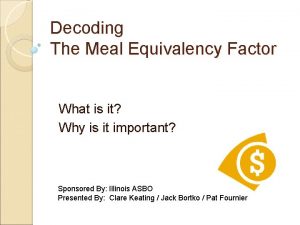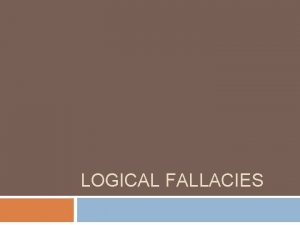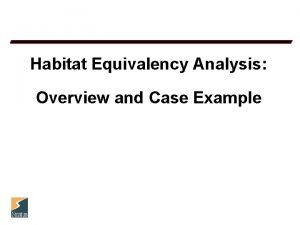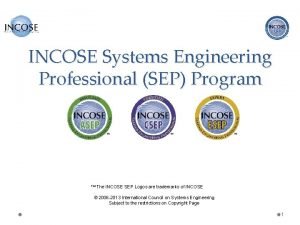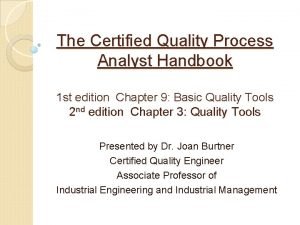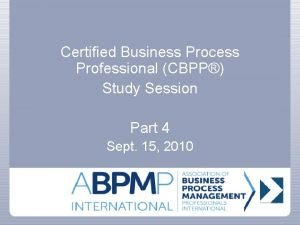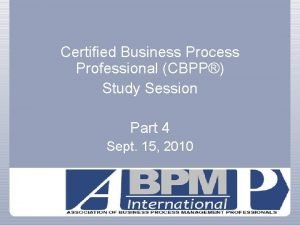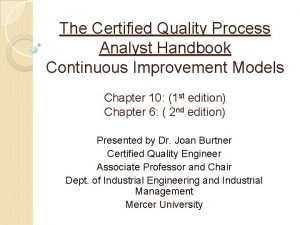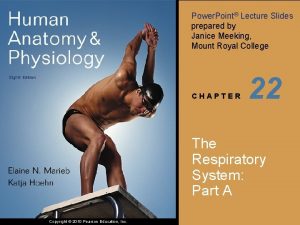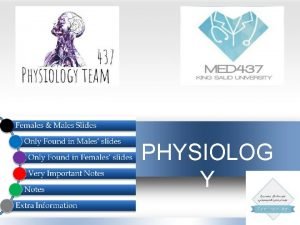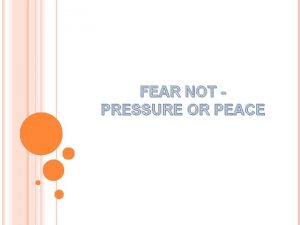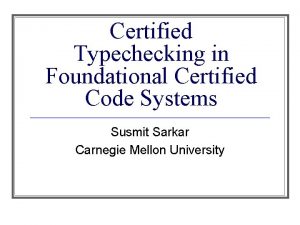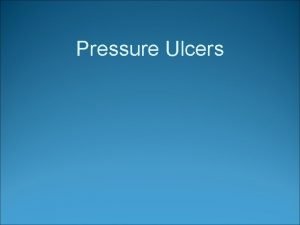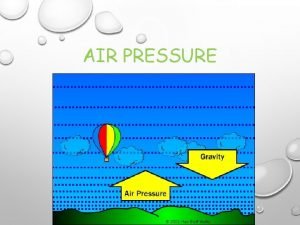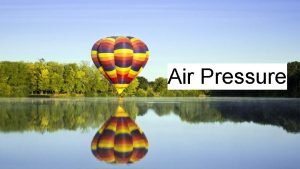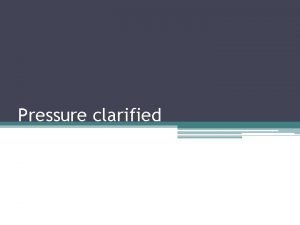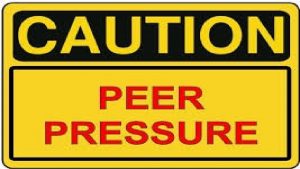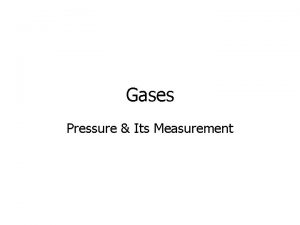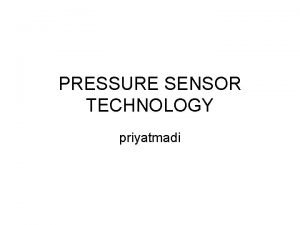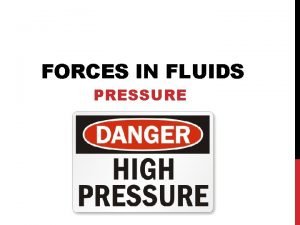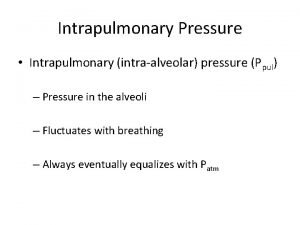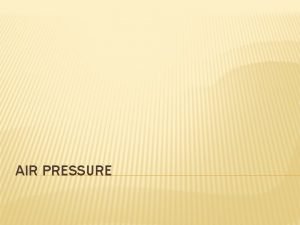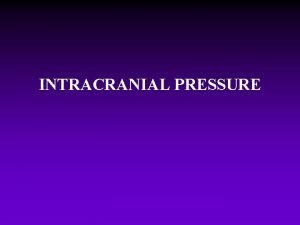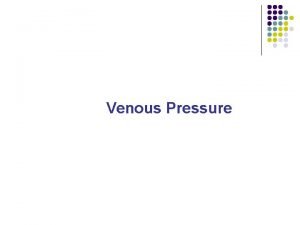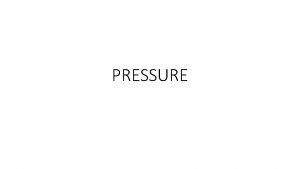Equivalency Process for Pressure Systems Not Certified to



















- Slides: 19

Equivalency Process for Pressure Systems Not Certified to Industry Standards ITSF 2014 Michael Gaffney Safety Engineering September 11, 2014

DOE Pressure Safety Requirements § 10 CFR 851 Appendix A - Worker Safety and Health Functional Areas, Section 4: Pressure Safety (b) Contractors must ensure that all pressure vessels, boilers, air receivers, and supporting piping systems conform to: (1) The applicable ASME Boiler and Pressure Vessel Code (2004); (2) The applicable ASME B 31 (Code for Pressure Piping) standards (3) The strictest applicable state and local codes - § NYS§ 14 -1. 19 : All unfired pressure vessels purchased and installed. . shall be constructed and stamped in accordance with Section VIII, of the ASME Code and registered with the National Board of Boiler and Pressure Vessel Inspectors (NBBI) NFPA and CGA Flammable and Toxic Gas Requires piping system to meet ASME B 31 requirements 2

Why ASME Pressure Safety Standards § In the USA (1899 to 1905), 1300 fatalities from 1600 boiler explosions • 1914: ASME publishes 1 st set of Rules • 1919: NBBI (National Board) formed - Uniformity/Enforcement/Qualification § Well defined set of standards for the design, fabrication & testing of pressure system components along with material requirements • Boiler and Pressure Vessel Code divided Power Boilers (Section 1), and unfired boilers/pressure vessels (Section VIII) - 3 different Section VIII Divisions - 1: provides "cookbook formula design" for < 3000 psi - 2: alternate rules: higher pressure for given thickness - 3: rules for pressures > 3000 psi § Use of a ASME Stamp Vessel provides a known high level of safety Exclusions provided for (examples): - Small diameter vessels (6" diameter) Low pressure (< 15 psid) application 3

Previous Pressure Requirements § BNL Relativistic Heavy Ion Collider (RHIC) • Commissioned in 1999 • Two 2. 4 mile rings of superconducting magnets and piping (4. 6°K) - Maximum Pressure: 18 ATM (in vacuum) • 25 KW Helium Refrigerator § RHIC built using ASME standards as a guide • DOE Pressure Safety Manual - Draft (never released) • Design Calculations Reviewed • Welding Standards Written (AWS) • Testing 4

RHIC Initial Pressure Testing (20 bar) § RHIC Dummy Magnets • Piping in Cryostat vice Magnet Cold Mass • No peer review Bellow Squirm Resulted in no Helium/ vacuum leak OOS electrical resistance caused investigation 5 BNL Designed Anti-squirm Device

Solution: Use Stamped Vessels! OH, You can’t use a stamped vessel 6

Why not use Stamped Vessels? § Superconducting magnets and superconducting RF cavities have issues not covered by the ASME Code • Code was not designed to address operations at 4°K - Charpy V-notch testing not performed less than 70°K - Localized heating affects • RF cavities are fabricated from metals (i. e. niobium) that are not listed by the Code • Vessels cannot be inspected or tested in the conventional manner • Vacuum vessels that operate at 1 Atmosphere external pressure but could be internally pressurized in the event of a failure condition - LHC Magnet Quench § Limited number of Suppliers with ASME Stamps • Additional cost to program becomes prohibited 7

Use of European Standards § No reciprocity between ASME & European Commission (CE) Pressure Equipment Directive (PED) 97/23/EC • European Standard Union (CE) EN 13445: Unfired Pressure Vessels - Material Properties - Allows for a higher amount of plastic deformation (Austenitic Steel) - Yield Strength: CE - 1. 0% Offset; ASME - 0. 2% Offset - Fatigue Testing/Analysis - Uses 500 lifetime Pressure Cycles vice 1000 (ASME) - Safety margin 2. 4 of Ultimate Strength vice 4 (ASME) - Testing required only for Category 3 & 4 (Based on Hazard) systems • ASME published Guides for Comparison - STP/PT-002: ASME Section I PED Guide - STP-PT-007: Comparison of Pressure Vessel Codes 8

Equivalency § 10 CFR 851 Appendix A - Worker Safety and Health Functional Areas Section 4: Pressure Safety (c) • When national consensus codes are not applicable (because of pressure range, vessel geometry, use of special materials, etc. ), contractors must implement measures to provide equivalent protection and ensure a level of safety greater than or equal to the level of protection afforded by the ASME or applicable state or local code. Measures must include the following: - Design drawings, sketches, and calculations must be reviewed and approved by a qualified independent design professional ( i. e. , professional engineer). Documented organizational peer review is acceptable. - Qualified personnel must be used to perform examinations and inspections of materials, in-process fabrications, non-destructive tests, and acceptance test. - Documentation, traceability, and accountability must be maintained for each unique pressure vessel or system, including descriptions of design, pressure conditions, testing, inspection, operation, repair, and maintenance. § BNL Director has been given Authority Having Jurisdiction (AHJ) for Pressure Safety by DOE 9

Equivalency: Implementation @ BNL § Laboratory's Experimental Safety and Health (LESHC) Pressure & Cryogenic Safety Subcommittee advises and acts for the Lab Director in the evaluation of issues and to determine equivalencies • • Trained in ASME Boiler Code and Piping Standards Peer review of designs Witness testing Determines if additional safety measures required - Guards/barriers - Window design/shields 10

Equivalency: Analysis • Analysis provided showing design meets Code - Can not use hybrid Division 1 (prescriptive) and Division 2 rules (analytical) • Material Specification - Be purchase to an ASME material spec (Section II) - List spec and heat treatment provided with certification - Material testing performed per Section VIII for each heat treatment used - Charpy V-notch @ 77°K for cryogenic conditions 11

Equivalency: Fabrication § Welding (Brazing) • Qualifications to ASME Code Section IX • Welding Procedure Specification (WPS) developed by fabricator and WPS approved by BNL - Must specify the ranges of all welding & parameters used (Code) - Weld coupons tested (as specified by Code) - Procedure Qualification Record (PQR) records data for each sample - PQR documents welder qualification to WPS 12

Pressure Relief Devices § Verify Pressure Relief Device adequacy • Must be able to safety vent off pressure from creditable accident - Loss of insulating vacuum - Trapped liquid volumes • Use Pressure relief devices that are stamped with ASME and National Board Code symbols when required for safe operation of a vessel or piping system • Discharge Piping - Flow effects/support - Contamination (Ice Plugs) - Personnel Safety Testing/Retesting Requirements Based on Service and can be adjusted based on historical data 13

Testing § All Vessels/process piping systems need to have a documented pressure test either at the manufacture's facility (Authorized Inspector) or after installation by a qualified/authorized person § Hydrostatic Test • Pressure Vessels: • Piping Systems: 130% of MAWP 150% of Design Pressure* § Pneumatic Test • Pressure Vessel and Piping Systems: 110% of MAWP/Design Pressure * if piping is not isolatable from the pressure vessel, use pressure vessel test pressure 14

Stored Pneumatic Energy § The energy released from a failure of just a pressure system can cause both personnel injury and equipment damage Pressure Wave 0. 2 psi Effect Breaks Windows 0. 5 - 1. 0 psi Shatters windows with body penetrating velocity 1. 0 - 2. 0 psi Wood frame structures 2. 0 - 3. 0 psi Brick facing 5. 0 psi 10. 0 psi 11 - 15. 0 psi Eardrum Rupture Lung Damage Fatal bodily injury (lung rupture/internal organs) Repair of Pressure Equipment and Piping (ASME PCC-2) Article 5. 1 30 ft 3 Pressure Vessel of N 2 @ 250 psig: 1 lbs TNT : - fatal radius = 5. 1 ft. 15

Equivalency: Follow-Up § Pressure Systems should only be approved as equivalent to standards based on a defined set of criteria • Configuration • Design Pressure (MAWP)/Temperature (MAWT) • Material Compatibility (service use) • Material Certification • Welding Process (PWHT) • Pressure Relief Devices • Testing • Inspection CSB Video “Falling Through the Cracks” 16

Vacuum Vessels § Code not required for 15 psid vessels but many high energy physics § § § applications can cause significant pressures to be developed (backfilled) • Cryogenics/Compressed Gas/Cooling Water Vacuum Systems Consensus Guideline for DOE Accelerator Laboratories (9/9/2008) • Establishes 3 Categories - I: Max Differential never > 15 psid - II: Max Differential controlled (i. e. PRD) to < 15 psid - III: Max Differential may exceed 15 psid • Excluded - Volume ≤ 7 ft 3 - External pressure/volume product (P x V) < 73 psi-ft 3 - Total Energy < 20, 000 joules - Cross-sectional area < 28 in 2 Provides qualification requirements for Engineers/ Designers Uses ASME Code Case 2286 as a basis to determine compress stresses PRD for Category II & III must be ASME (UV) or NBBI certified • Specific Burst Disk testing of lots Category III vessels fabricated to DOE Quality Standards (O-414. 1 C) 17

Windows/Viewports § Pressure/Vacuum windows/viewports are typically not made of ASME approved material • • • Silica Beryllium Plastics - Typically brittle material § Mounting affects critical • • • Simple supported Held but not fixed Held and fixed • • 10 x (ultimate) Lower factor if vendor has supporting evidence • • • Typically required during venting vacuum system Pressure Relief Devices (MDC burst disc) Limited gas amount/fill rate (i. e. LN 2 boil-off) § Allowable Stress Safety Factor § Engineered Controls to prevent Overpressure 18

Questions & Discussion Contact Mike Gaffney BNL Safety Engineering Group gaffney@bnl. gov (631) 344 -7468 19
 Prozac dosage chart
Prozac dosage chart Uncc transfer credit advisor
Uncc transfer credit advisor Equivalency theory and distance education
Equivalency theory and distance education Meal equivalency
Meal equivalency Unofficial transcipt
Unofficial transcipt False equivalence fallacy
False equivalence fallacy Habitat equivalency analysis
Habitat equivalency analysis What is incose
What is incose Certification incose
Certification incose How to clear csep incose exam
How to clear csep incose exam Sadlier vocabulary workshop level d unit 1
Sadlier vocabulary workshop level d unit 1 Flowchart tool
Flowchart tool Certified business process professional
Certified business process professional Certified business process professional
Certified business process professional Certified quality process analyst
Certified quality process analyst Elmslie trillat
Elmslie trillat Pressure support vs pressure control
Pressure support vs pressure control Pressure mapping for pressure ulcers
Pressure mapping for pressure ulcers Intrapleural pressure
Intrapleural pressure Starling forces equation
Starling forces equation



